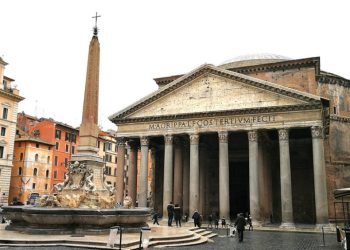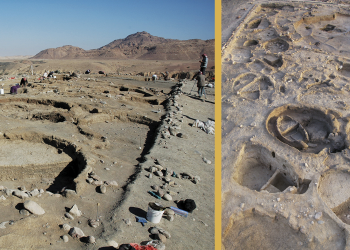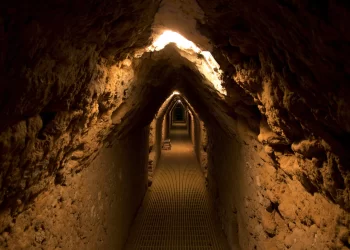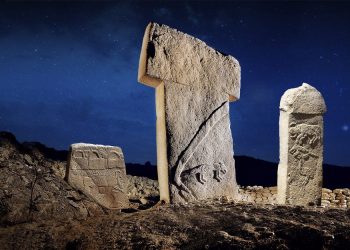Mexico, a land of rich history and vibrant culture, is home to some of the most awe-inspiring pyramids in the world. These colossal structures are a testament to ancient Mexican civilizations’ architectural genius and artistic prowess. This article delves into the fascinating world of Mexico’s five largest pyramids, exploring their history, significance, and the civilizations that built them.
The Great Pyramid of Cholula: World’s Largest Monument by Volume
The Great Pyramid of Cholula, also known as Tlachihualtepetl, is the largest pyramid in Mexico and the world in terms of volume. Located in the city of Cholula, Puebla, this colossal structure spans 400 meters (1,300 feet) on each side and towers at a height of 54 meters (177 feet). Built by the ancient civilization of Cholula, the pyramid is actually a temple dedicated to the Mesoamerican god Quetzalcoatl.
What sets the Great Pyramid of Cholula apart from other pyramids is its unique construction. The pyramid is made up of six distinct layers, each built over the other by successive generations. This stratified architecture gives the pyramid a fascinating archaeological significance, offering a glimpse into the changing beliefs and practices of ancient Cholula.
The Pyramid of the Sun: Teotihuacan’s Most Iconic Landmark
The Pyramid of the Sun, located in the ancient city of Teotihuacan, is another fascinating pyramid in Mexico and is considered the third-largest in the world. With a base measuring 225 meters (738 feet) on each side and a height of 65 meters (213 feet), this colossal structure dominates the landscape of Teotihuacan. The pyramid is aligned with the other structures in the city along the Avenue of the Dead, which runs north to south.
Built around 100 CE, the Pyramid of the Sun was constructed using adobe bricks and limestone, and it is believed to have been dedicated to the sun god. The pyramid is an essential part of the city’s religious and cultural significance, drawing tourists from around the world to explore its mysteries.
The Pyramid of the Moon: The Crown Jewel of Teotihuacan
The Pyramid of the Moon is another majestic structure in Teotihuacan. With a base of 150 meters (492 feet) on each side and a height of 42 meters (138 feet), this pyramid complements the grandeur of the Pyramid of the Sun.
The Pyramid of the Moon is believed to have been built around 200 CE and is thought to be dedicated to the Great Goddess of Teotihuacan, a deity associated with water, fertility, and the earth. The pyramid’s position at the northern end of the Avenue of the Dead adds to its significance as a symbol of the city’s religious importance.
Nohoch Mul: The Towering Treasure of Cobá
Nohoch Mul, is nestled within the ancient Maya city of Cobá. With a height of 42 meters (137 feet), this imposing structure provides a breathtaking view of the surrounding jungle and ruins. Nohoch Mul, also known as the Great Pyramid, is the tallest pyramid in the Yucatán Peninsula and a symbol of the thriving civilization that once called Cobá home.
Built around 500 CE, Nohoch Mul is a classic example of the Petén architectural style, which is characterized by its steep, sloping sides and tiered construction. The pyramid was likely dedicated to the worship of various gods, with its summit featuring a temple adorned with beautiful stucco decorations. A climb to the top of Nohoch Mul rewards visitors with a panoramic view that stretches as far as the eye can see, making it a must-visit destination for history enthusiasts and adventurers alike.
Celebrating Mexico’s Architectural Wonders
The five largest pyramids in Mexico stand as a testament to the incredible achievements of the ancient civilizations that shaped this diverse and culturally rich nation. From the massive Great Pyramid of Cholula to the towering heights of Toniná and Nohoch Mul, these architectural marvels continue to captivate the imagination of visitors from around the world. By exploring the history and cultural significance of these awe-inspiring structures, we gain a deeper understanding of the rich tapestry of Mexico’s past and the enduring legacy of its ancient peoples.
PLEASE READ: Have something to add? Visit Curiosmos on Facebook. Join the discussion in our mobile Telegram group. Also, follow us on Google News. Interesting in history, mysteries, and more? Visit Ancient Library’s Telegram group and become part of an exclusive group.











